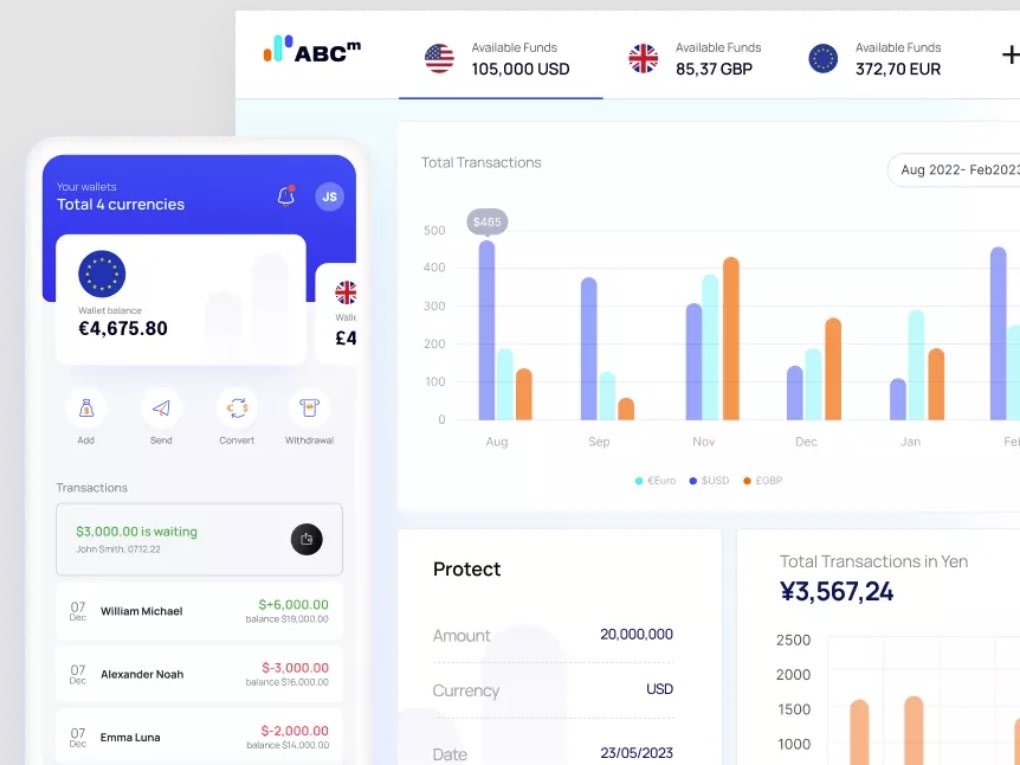Invest
Three ways to diversify your portfolio
Portfolio diversification is not an assured protection against all investment risks, but proper asset allocation is effective in negating or cushioning the impact of any loss to an investor’s portfolio.
Three ways to diversify your portfolio
Portfolio diversification is not an assured protection against all investment risks, but proper asset allocation is effective in negating or cushioning the impact of any loss to an investor’s portfolio.

When creating a strategy that determines the best possible asset allocation, both objectives and time horizon should be considered.
Ideally, all investors should have an objective they aim to achieve with their investments. These objectives should be tied with a preferred time horizon—the amount of time an investment is held or the period between when the assets were purchased and when the portfolio will be liquidated.
For instance, a 30-year-old who plans to retire when they reach 65 years may build an investment portfolio with a larger allocation for growth assets than low-risk debt securities. As their time horizon decreases, their portfolio should start to shift and carry more low-risk assets, such as government bonds.
Once they determine their goals and time horizon, investors need to allocate a diversified set of assets to their portfolio.

How to diversify
Some beginner investors may simply think that diversification means buying different types of investments, but there are other things to consider when properly structuring an investment portfolio.
Diversification can be a simple process if an investor considers doing the following:
- Invest in different asset classes
- Consider different markets and sectors
- Schedule different maturities along the time horizon
Invest in different asset classes
Investors automatically think of shares, bonds and properties when building their portfolio, but there is actually a large variety of investment products available that belong to different asset classes.
Investors should at least consider allocating their capital to these four asset classes:
Cash: These refer to cash-based investments such as savings accounts, certificates of deposit (CDs), checking accounts and money market funds.
Investors may allocate more capital as cash if their investment horizon is very short and if they cannot risk losing their principal investment.
Fixed interest or debt securities: These refer to ‘low-risk’ investments that yield regular returns until its maturity, such as bonds.
This asset class is more exposed to volatility than cash-based investments, but there is also a better assurance for income generation.
Equities: Equities usually refer to shares. It involves shareholders becoming part-owner of the underlying business. Depending on the type of share, shareholders can receive regular income in the form of dividends or they may rely solely on the underlying asset’s increase in value. Equities may also come in the form of managed funds that takes other equities as its underlying assets.
Despite being the best defence against inflation, equities are exposed to various market risks and can change in value multiple times in a single day. This means equities may not be the best choice for investors with a short time horizon.
Property: This may refer to physical bricks and mortar real estate structures and may be held directly or indirectly. Owners are responsible for the daily operations of direct property investments, while investors using indirect investments only invests money in exchange for income from the managed property.
Direct properties are safe from market volatility but its value may still depreciate if the real estate market dips in the area where the structure is built.
Consider different markets and sectors
Once the investor has decided on the asset class allocation based on their objectives and time horizon, they may further diversify the portfolio by selecting assets from different markets and sectors.
For instance, a portfolio with an allocation of 10 per cent cash, 30 per cent fixed income and 60 per cent equities may be further divided. The fixed income portion may be composed of 60 per cent government bonds and 40 per cent corporate bonds. Equities may be divided into 40 per cent blue chips, 30 per cent individual stocks in emerging markets, renewable energy and local food sector and 30 per cent in listed property funds.
The example above cover different industries and increases the portfolio’s potential for high growth by extending its reach to foreign markets.
Schedule different maturities along the time horizon
Another way to diversify an investment portfolio is to limit the timing risk by spreading out the purchase and liquidation of assets.
This may be done by following a disciplined strategy like dollar cost averaging, which helps investors reduce the impact of price volatility over time.
They may also use a similar technique to bond laddering, which requires investors to invest in bonds with different maturities, then reinvesting the income generated from a mature bond to the next maturing bond.
Diversification is only the beginning
A well-diversified portfolio is a stable portfolio that weathers market downturns, preserves capital and minimises loss; however, investors must remember to check their portfolio at least annually and rebalance as necessary—especially if objectives change.
As the underlying investments increases in value, the allocation tends to become skewed in favour of assets that have appreciated in value.
It is recommended for inexperienced investors to seek the advice of licensed professionals to better plan their portfolio.
This information has been sourced from the Australian Investors Association and Nest Egg.
About the author

About the author


Stock market
International stocks: Diversifying your portfolio beyond Australia
In an increasingly globalized market, Australian investors have the opportunity to enhance their investment portfolio by incorporating international stocks. Diversifying your investments globally can ...Read more

Stock market
Stock market rally likely to continue regardless of Fed minutes tone, says deVere CEO
The bull run that has propelled Wall Street's major indexes to record highs this month is expected to continue regardless of the tone of the upcoming Federal Reserve minutes, according to Nigel Green, ...Read more

Stock market
US stock rally driven more by valuation growth than earnings, leaving tech names vulnerable: Innova
The strong gains in US stocks over the past year, particularly in the technology sector, have been driven more by expanding valuations than underlying earnings growth, leaving them exposed to a ...Read more

Stock market
Sun Silver to make its ASX debut with a $13 million IPO
Sun Silver Limited (proposed ASX Code: "SS1") has announced the opening of its Initial Public Offering (IPO) today, aiming to raise a minimum of $10 million and a maximum of $13 million (before costs)Read more

Stock market
Nasdaq hits record high, underscores the value of tech in investment portfolios
The Nasdaq Composite's surge to an all-time high last Friday highlights the importance of incorporating technology into investment strategies. Read more

Stock market
Apple sets an unprecedented profit pace within the GAFAM group in 2023
After navigating through the economic difficulties presented in 2022, the technology sector has demonstrated resilience and growth, with many companies seeing increases in revenue and stock value. Read more

Stock market
Fintech startup okoora unlocks over $3 billion in forex savings for businesses
Fintech innovator okoora has announced it has saved customers a monumental amount over $3 billion through international foreign exchange transactions. Read more

Stock market
Google's Gemini edges out ChatGPT4 in groundbreaking AI showdown
Google's latest AI model, Gemini, has edged out OpenAI's ChatGPT4 in a recent set of rigorous multi-discipline tests, marking a significant milestone in the large language model (LLM) sector. Read more

Stock market
International stocks: Diversifying your portfolio beyond Australia
In an increasingly globalized market, Australian investors have the opportunity to enhance their investment portfolio by incorporating international stocks. Diversifying your investments globally can ...Read more

Stock market
Stock market rally likely to continue regardless of Fed minutes tone, says deVere CEO
The bull run that has propelled Wall Street's major indexes to record highs this month is expected to continue regardless of the tone of the upcoming Federal Reserve minutes, according to Nigel Green, ...Read more

Stock market
US stock rally driven more by valuation growth than earnings, leaving tech names vulnerable: Innova
The strong gains in US stocks over the past year, particularly in the technology sector, have been driven more by expanding valuations than underlying earnings growth, leaving them exposed to a ...Read more

Stock market
Sun Silver to make its ASX debut with a $13 million IPO
Sun Silver Limited (proposed ASX Code: "SS1") has announced the opening of its Initial Public Offering (IPO) today, aiming to raise a minimum of $10 million and a maximum of $13 million (before costs)Read more

Stock market
Nasdaq hits record high, underscores the value of tech in investment portfolios
The Nasdaq Composite's surge to an all-time high last Friday highlights the importance of incorporating technology into investment strategies. Read more

Stock market
Apple sets an unprecedented profit pace within the GAFAM group in 2023
After navigating through the economic difficulties presented in 2022, the technology sector has demonstrated resilience and growth, with many companies seeing increases in revenue and stock value. Read more

Stock market
Fintech startup okoora unlocks over $3 billion in forex savings for businesses
Fintech innovator okoora has announced it has saved customers a monumental amount over $3 billion through international foreign exchange transactions. Read more

Stock market
Google's Gemini edges out ChatGPT4 in groundbreaking AI showdown
Google's latest AI model, Gemini, has edged out OpenAI's ChatGPT4 in a recent set of rigorous multi-discipline tests, marking a significant milestone in the large language model (LLM) sector. Read more








